Walking back in time to learn about the future of permafrost
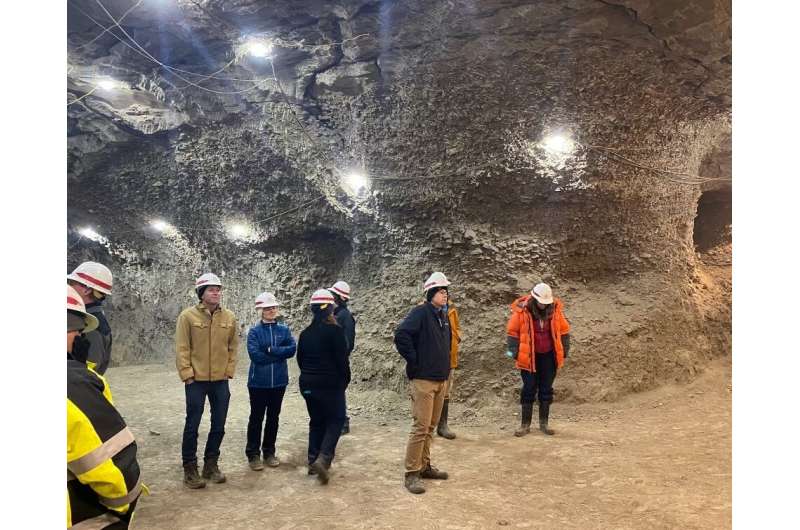
There's a freezer door in the mountainside outside of Fairbanks, Alaska. Tom Douglas opens it and we step inside, breathing in cold air and musky dust as we start to walk back through time.
This isn't fantasy. It's the Permafrost Tunnel run by the U.S. Army's Cold Regions Research and Engineering Laboratory in Alaska, where Douglas is a Senior Scientist.
Recently, Douglas led a group of scientists and pilots with NASA's Arctic Boreal Vulnerability Experiment (ABoVE) on a tour through the Tunnel to learn about permafrost. Permafrost is any soil, ice, or organic matter like plant material or bone that has stayed frozen year-round for at least two years. The tunnel was initially excavated in the 1960s and has been expanded since 2011. Now, the Permafrost Tunnel has almost 500 meters of excavation. "There's just nowhere else on Earth that has this type of access to permafrost," said Douglas.
The ABoVE team studies permafrost thaw and its impact on landscapes and ecosystems across the Arctic from the air and above the ground. They also work in conjunction with CRREL and other scientists to figure out how measurements made in and above the permafrost tunnel can be extrapolated to airborne measurements taken from research aircraft. But for many of the ABoVE team members, this is their first time getting to see permafrost up close.
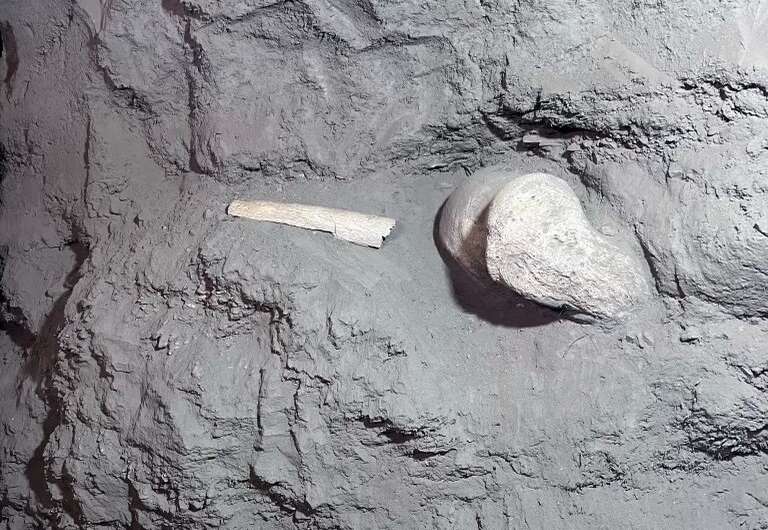
The frozen soil near the tunnel entrance is the same ground that mammoths and steppe bison walked on around 18,000 years ago—and it has the bones to prove it. But as we move deeper into the tunnel and further back in time, these signs of animal life disappear.
Douglas stops at a yellow tag in the deepest, farthest back part of the tunnel. He points out an alder branch sticking out of the wall. "This is the oldest thing in here," he says. "It's nearly 45,000 years old."
Most of the permafrost tunnel is densely compacted dirt and rock. In some places, frozen grasses and other dead plant matter are buried within the walls or hanging from the ceiling. As we walk down further into the tunnel, Douglas points out different features: the thin horizontal lines that show how the land surface moved up over time, strips of ice from water that pooled atop the permafrost and froze, and giant ice wedges.
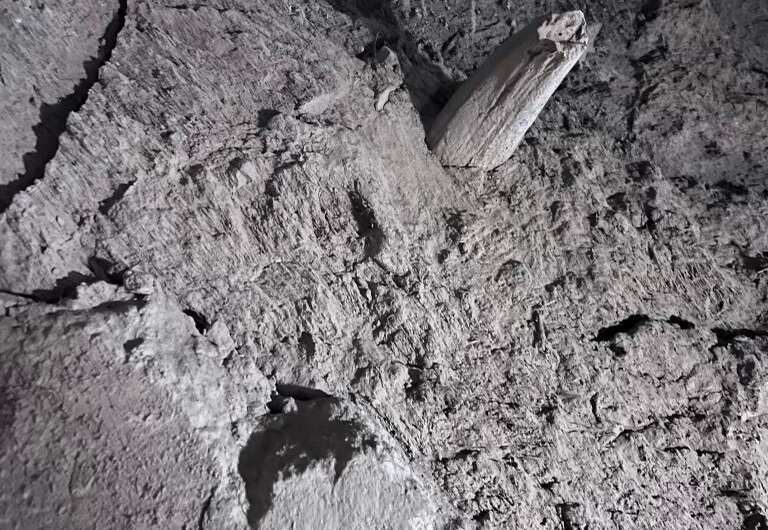
Arctic permafrost is thawing at an accelerating rate. As permafrost thaws, those ice wedges in the permafrost melt. This creates holes in the ground that can cause the land surface above to subside. This process is called thermokarst—and it's drastically changing landscapes not only above the Permafrost Tunnel but at locations across Alaska and northwestern Canada. In some areas, the ground is sinking or caving in. In others, new bodies of water called thermokarst lakes are forming.
As we walk through the tunnel, Douglas reminds us that just above our heads is a boreal forest with grasses, shrubs and trees. CRREL scientists have taken measurements above and belowground to try to relate changes in the land surface above to features in the permafrost layer belowground.
Different vegetation types grow on ground that has frozen versus on thawed permafrost, he explains. Black spruce and sphagnum mosses tend to grow above the hard, frozen silt of permafrost. In areas where permafrost is thawing, the trees are often stunted or tilting to the side. Areas with thermokarst features also tend to have vegetation often found in wetlands. Thawing permafrost also changes the soil moisture content. The ABoVE team is measuring both of these factors—vegetation type and soil moisture—from aboard the NASA 802 research aircraft with a radar instrument called UAVSAR.
-
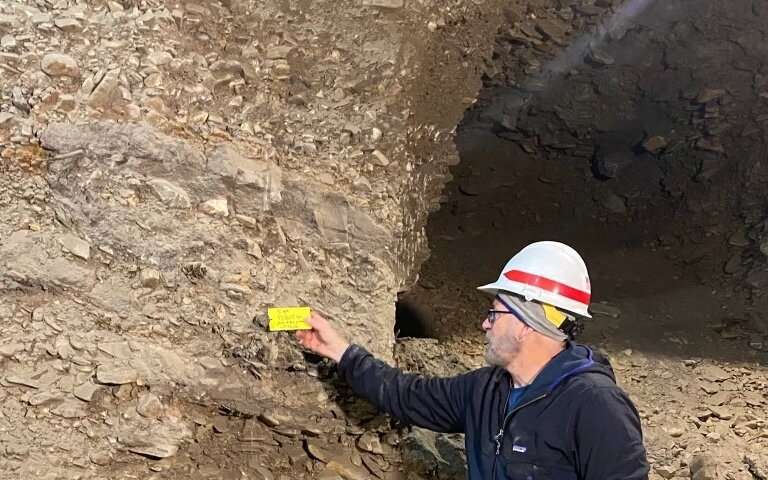
Scientists use a technique called Carbon-14 dating to determine the age of sticks – like this one, the oldest thing in the tunnel – rocks, bone and other material in the permafrost tunnel. Credit: Sofie Bates / NASA -
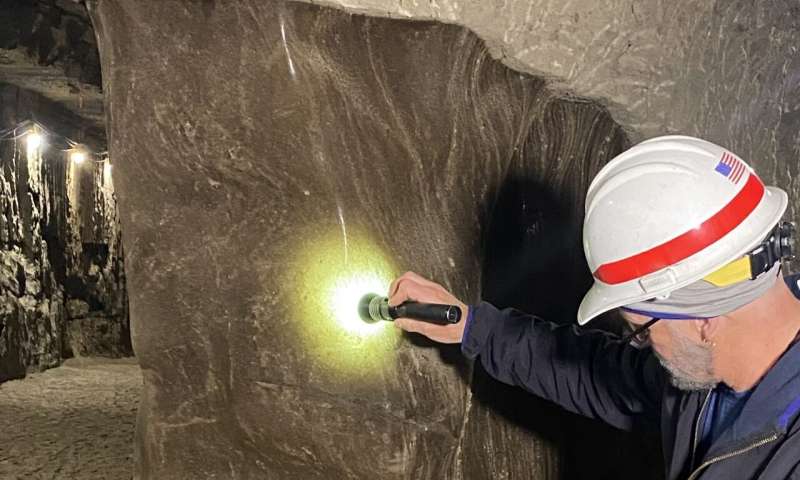
Tom Douglas shines a flashlight on a giant ice wedge in the permafrost tunnel. Credit: Sofie Bates / NASA -
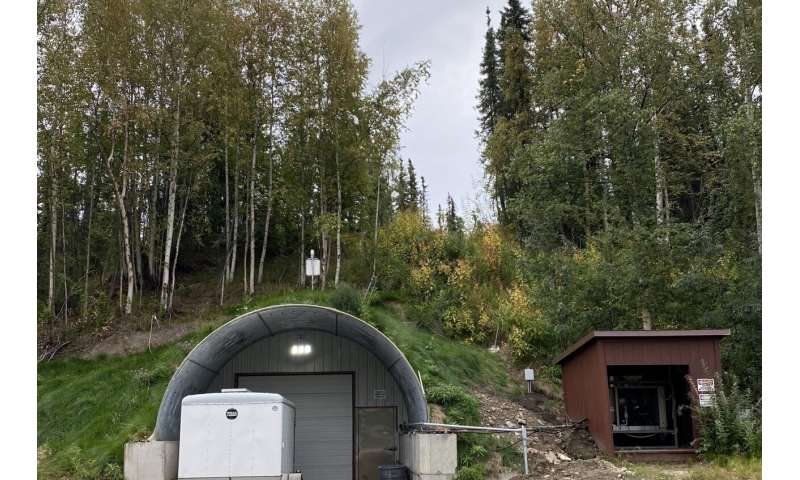
Above the permafrost tunnel is a common scene in interior Alaska: a boreal forest with spruce trees and a thick layer of spongy ground covered in grasses. Credit: Sofie Bates / NASA
The work scientists are doing at the CRREL permafrost tunnel helps connect features in the permafrost layer to changes in the ground above that can be remotely sensed with airborne radar instruments—changes the ABoVE team is studying across Alaska and northwestern Canada with research aircraft.
"Measurements we make here at the tunnel can be projected and scaled to help us track these changes across the broader Arctic," said Douglas.
Provided by NASA




















